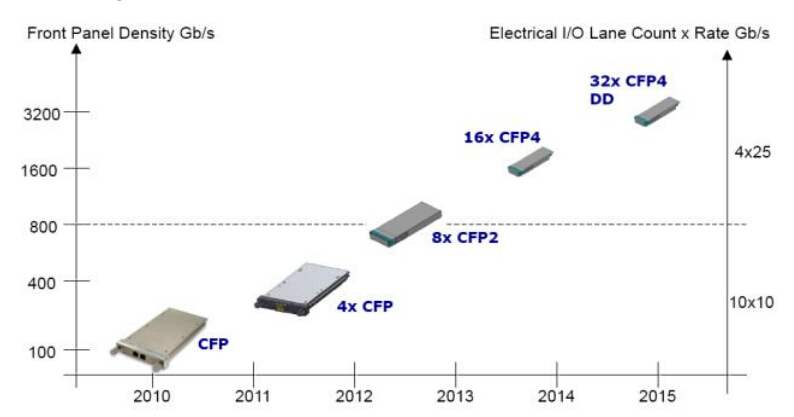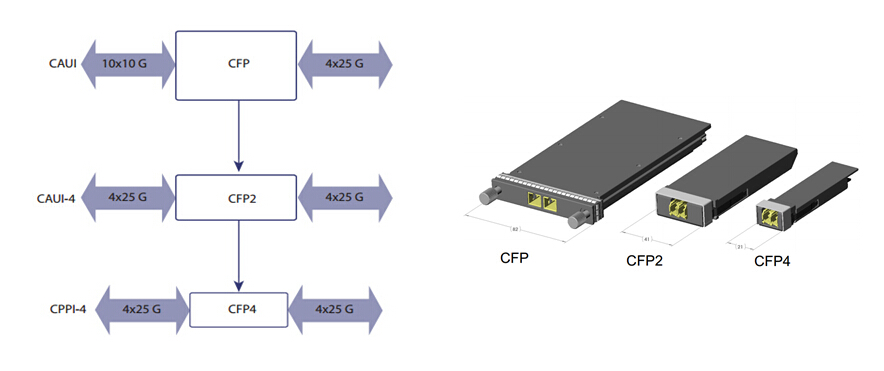At present, almost most of the fiber transceivers are with "hot-swappable", or also called "hot-pluggable" functions (the following contents consistently use hot-swappable) in the optics market. However, there are few articles written for hot-swappable optical transceiver, because people generally consider it just a function that will help us save money or make our work more convenient and there is unnessary to know much about it. How about you? Are you really not interested in it or just because you don't have the resource to learn it? Here is an opportunity for you to learn much about the hot-swappable optical transceiver module, mainly the "hot-swappable" in this paper.
What's "Hot-swappable" Optical Transceiver?
Hot-swappable optical transceiver, is a device with a function that can support inserting or pulling out the module without shutting down the system or without significant interruption to the system and significant interruption to the operation of the system. This function can help us to avoid complete redesigns and cutdown the exorbitant costs associated with the practice, e.g. system updating. Now, optical transceivers, such as GBIC, SFP (Small Form Pluggable), SFP+ (Small Form Pluggable Plus), 40G QSFP etc. are all hot-swappable. The following figure shows Juniper Hot-pluggable 1000BASE-SX SFP - EX-SFP-1GE-SX:

Why "Hot-swappable" is So Important to Optical Transceiver?
As we know, optical transceiver module is an important part in optical transmission system. For each management or upgrade, we should power down the device until we finish the pluggable process, if we used a "non-hot-swappable" optical transceiver. However, because of the importance of telecommunications and data transmission systems, if power cuts carry on a long time, there will be a great loss. Additionally, the restart time of some operation systems is long which also leads a big loss. This is why it is so important to find devices that are hot-swappable. Nowadays, the hot-swappable technology is widely used in data communication and transmission industry and becomes more and more important.
Key Technologies of "Hot-swappable" Function
When people wanted to add the "hot-swappable" function to the optical transceiver modules, a cascade of problems must be solved to ensure the device work well. First, the we should guarantee the safety of the laser. As we know, laser is the most important and expensive part of an optical transceiver module. It is easy to be damaged and vulnerable to static electricity damage as it is a static sensitive component. In addition, we should also consider the surge current and system bus to avoid damaging the components of optical transceiver and causing interference to data transmission.
To solve these problems, people use some of the technologies to ensure safty and feasibility of hot-swappable optical transceiver modules. MSA (Multisource Agreement) defines using the TX_fault (Transmitter fault) to indicate whether the optical transceiver module works in good condition. When we inserted an optical transceiver, there is a initializing program. And the optical transceiver begin to test by itself after the power on. If the self test is approved, it will dirve the IC (integrated circuit) to offer the current to the laser, and then laser work. Otherwise, it will not offer current to the laser. In addition, adding a shutdown pin to the circuit that can close the LD (laser diode) when failure occurs is also a solution to ensure the saftey of laser.
Meanwhile, to reduce the surge current, we can use a specific sequence of power on. Moreover, we can also add a filter circuit as well as current limit switch to further reduce the surge current. Furthermore, in order to reduce the interference of hot-swappable module on the system bus, we usually employ connect pullup resistors and precharge technologies. These are also defined by MSA.
Ensure They are Hot-Swappable When You Buy Optical Transceiver
After reading the above contents, you will understand more about the "hot-swappable" function of optical transceiver and know how it is so important. This is why "hot-swappable" optical transceiver was so popular with users. We can never underestimate the power of optical transceiver modules that are hot-swappable. They can reduce expenditures for companies, especially when devices fail prematurely because they do not have to completely shut down the system to replace the device. When devices have more flexibility and functionality, companies save money and time. In a word, to ensure the optical transceiver module is hot-swappable when you decide to buy it.
Originally published at www.fiber-optic-transceiver-module.com.




